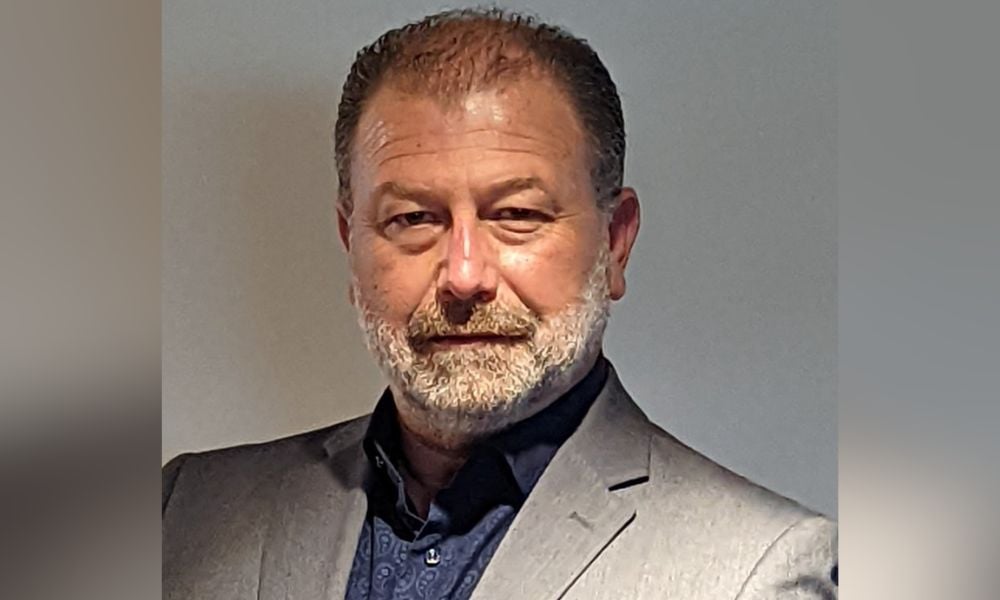'We have to be brave enough to create that safe space for our people,' says Purolator safety leader

Building a strong safety culture begins with understanding the unique and diverse needs of your workforce, says Jimmy Vassilopoulos, national director of health and safety at Purolator. Vassilopoulos, who’ll also be chairing Canadian Occupational Safety’s upcoming Canadian Safety Summit, explains that from his perspective this starts with awareness.
“Having a safety management system on paper, having all these beautiful ‘Cadillacs’ of applications, is great. But we're dealing with people here. When we're dealing with people it all begins with communication and awareness. And I'm a real believer of safety through effective leadership.”
This, as Vassilopoulos points out, is something that begins at the top and filters down into a culture. Afterall, if you don’t have the C-suite on board with your safety plans there’s little hope your people will follow.
“My personal strategy,” adds Vassilopoulos, “has always been to focus and emphasize the awareness piece - the awareness that comes with the benefits as well as the awareness of the consequences. Having a communication strategy within a safety management system that that allows for time, for engagement, for involvement and digestion of risks as well as controls consequences is really crucial.”
Blending mental and physical
For Vassilopoulos, he says in Canada – where workplace health and safety committees are not only encouraged but regulated – there’s a commitment to growing safety capabilities within an organization.
“Another mechanism of expanding those committees is using them as an avenue to not only identify risk but more importantly the avenue and medium of communication to our workgroups,” he says. “The peer-to-peer communication has a completely different impact when it comes from top down. At the end of the day, from a leadership perspective, this should be supported. And I've been very, very grateful, especially in my current organization where I've had that type of leadership.”
An integral part of this leadership strategy involves bridging the historical gap between mental and physical safety. Vassilopoulos notes that while the connection between mental wellbeing and physical safety is increasingly recognized, this was not always the case.
“My history is in the military,” says Vassilopoulos. “[Here], a psychological safety connection with our physical connection was paramount. Being mentally ready for our task at hand, so that we can be physically ready – that’s how the two tie in. The way that we can grow that connection is through a true open-door policy and sharing of testimonials so that people can see that [they’re] not alone, [they’re] not the only one.”
64% of managers would quit over wellbeing
The importance of championing mental wellness in safety programs can’t be understated. Though somewhat of a more modern ideal, the data really speaks for itself. Research from Deloitte found that 64% of managers have considered quitting a role to find one that better supports their wellbeing, with poor mental health accounting for 51% of all long-term sick leave. Vassilopoulos believes that to roll out a successful mental health support strategy people need to overcome self-stigmatization.
“Many people are reluctant to say, ‘I'm having issues at home' or 'I didn't get enough sleep because I'm in debt',” he says. “If we’re going to be true safety professionals we have to take a deeper dive, be brave enough to create that safe space for our people in the investigation - because that's a variable of risk. And if we disregard our actions, it will take us down potentially a wrong path.”
Inside one of ‘Canada’s Most Admired Cultures’
At Purolator, Vassilopoulos adopts a pioneering approach to addressing these challenges. The company has made significant strides by implementing programs that encourage open sharing among employees without fear of stigma.
“We’ve taken a huge step in taking our leadership through a very intensive and profound mental health certification course from The University of Queens. It’s very scientific and not superficial at all.”
Another challenge is the inertia within the safety professional community. Vassilopoulos says many professionals are comfortable with traditional methods and may be reluctant to broaden their perspectives.
“If I’m going to do a true analysis of the hazards, I need to have that component in there because I need to dissect it,” he says. “I need to come up with controls for that so that I can mitigate the risks and eliminate it as much as possible.”
On the topic of measuring the effectiveness of these mental health and wellness programs, Vassilopoulos details both qualitative and quantitative methods. Initially, Purolator focused on qualitative measurements, which are vital during the early stages of any health program. And, these successes led to Purolator being names as one of Canada’s Most Admired Cultures for four consecutive years.
Exclusive Canadian Safety Summit preview
“The majority of our employees are happy, not just because they're compensated well or because they work in a decent organization with good benefits...but because they truly feel that their employer cares about them and their families,” says Vassilopoulos. “If you feel that your employer, your parent in essence, cares about you then you can be brave. And if you feel safe then you'll grow.”
At the upcoming Canadian Safety Summit, Vassilopoulos will be touching on the topic of wellbeing and predictive based safety in his panel discussion.
He’ll be joined by HelloFresh’s Olubunmi Alabim, Quanta Services’ Shilo Neveu and Microsoft’s Chandan Uprety to debate what the future holds for safety professionals in the age of AI.





